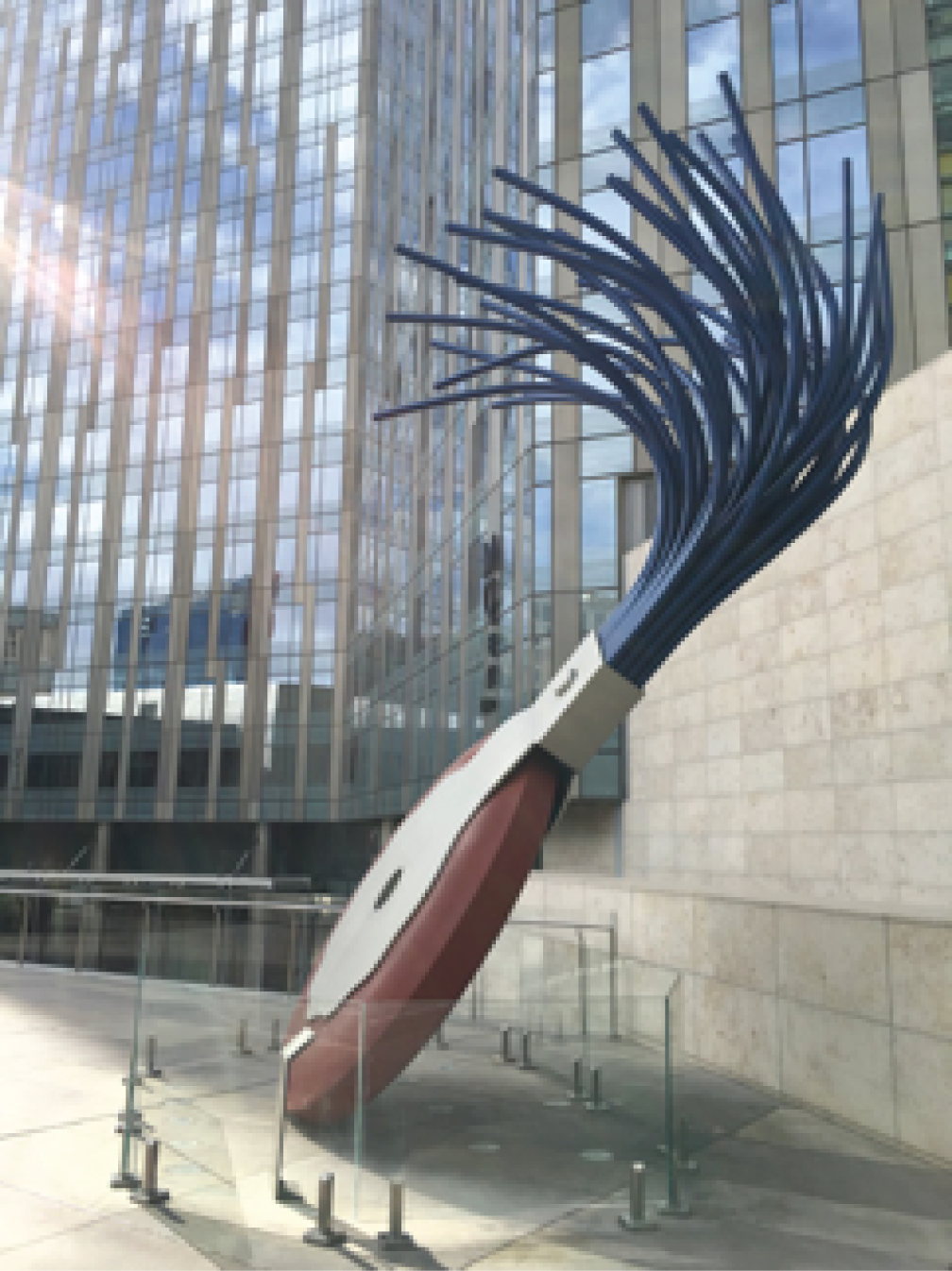
Several years ago my family and I walked past this 1999 sculpture of a 12’ tall typewriter eraser by artist Claes Oldenberg. Oldenburg is well known for taking common everyday objects and turning them into compelling monuments. What made this particular encounter so notable was the fact that my children had no idea what this object was. In contrast, my wife and I had countless encounters
with this device — many of which were less than positive. When we observed this work the memories flooded our minds, creating a context that shaped our experience and understanding. My two children simply viewed the artwork as an interesting and peculiar composition.
I had a similar experience recently when I asked a group of students why glass enclosed conference rooms were so ubiquitous in contemporary office buildings. The response to this innocent question resulted in several bewildered looks and a few tortured hypotheses. Images of mahogany clad rooms, hidden in the bowels of some social club, filled with slightly over weight middle aged white men smoking cigars and sipping on scotch, making deals that impacted the unaware masses, were fortunately not burned into their psyche. The glass conference room forms an implied connection between the people making important decisions and the society that will be impacted by those
decisions. It is a powerful gesture that allows passersby to see who is engaged in making important decisions and is an effective symbol of transparency. Transparency is the overwhelming expectation of any responsible, ethical, modern, progressive organization.
Without a diligent effort, the passing of time will render our collective understandings opaque. Conversely, it is interesting to consider and explore what happens after our collective understanding erodes and what remains is an object, a composition and a childlike encounter. Perhaps, like music without lyrics, there is meaning, purpose and human connection at an elemental, compositional level — through a work’s deep and enduring structure.
